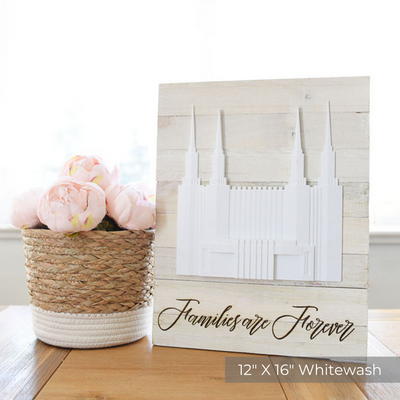Connection Is Real with the 1950 US Census
By Kerry Smith
In May and June I suddenly became a little obsessed with helping to identify names for the 1950 US Census project. I wasn’t the only one. Over 180,000 volunteers contributed efforts as well. But I went a little overboard, perhaps, reviewing almost 15,000 names in that short timeframe.
Why on earth would I do that?, you might wonder. Well, I was hooked—and I realized the modern-day significance for myself and many others. Volunteers such as myself reviewed handwritten census records and typed in the names, thus making the information digitally available and searchable to the entire Internet world.
But my reason and personal commitment went even deeper than that. When the project finished, I’d have finger-tip access to online information about my parents! My dad and mom were born in 1940 and 1949 respectively. I couldn’t wait to see their information as kids show up on someone’s census radar 72 years ago.
With my love for family history, I’ve looked at many census records. But this one, the 17th census since 1790, would finally show me about two people I know and love personally.
Perhaps you’re curious too. Connection is real. Let me show you a glimpse of what you might find in your 1950 Census search.

How to Begin Your Search
It’s easy! Just pick a family member. Go to familysearch.org/1950census. Use the Search Now feature and type in a first name, last name, place (city, county, state, province), and birth or death year. If you don’t have all the information, just fill in what you can. The more information you can enter, the easier and more complete your search will be.
If you don’t know much of this search information, visit familysearch.org and look up your family tree. There are also good instructions on the census search that tell you how to use it.
As of right now, 21 of the states and territories are digitally available for searching. Other areas will soon follow as reviews are complete.
Family Insight from the Census
In my personal search, I chose to find my dad first. Within less than a minute, I found him and saw that in 1950 he was living with his father and step-mother. I know some of the backstory, and it was not a happy family life–for either parent. To this day, my dad does not talk about his step-mom or the children she had from a prior marriage who lived with them. Until I glanced at the census, I did not know the names of those three other children.
My dad has two sisters, one named Karen. I had no idea she had lived with another sister who shared her name. That must have been hard for her. How would it be to have your mother die and hear your name spoken by another woman, a step-mother who is unkind to you, knowing she means her daughter and not you? My Aunt Karen died when I was a toddler, and I know very little about her. But I think I just discovered some personal insight.
For my mom, I was delighted to see her listed on the census with her mom and dad as the last of five children. In 1950 her mother was still alive, and all was well in the home. Just two short years later, she would die in a tragic car accident, leaving my mother at age three and her older siblings motherless. I know how my grandmother’s earthly story ends, so it touches me to see her name on the census from a time and place when everything was good and whole.
What Can You Learn from the 1950 Census?
I imagine more of your family story awaits you on the census. Besides learning an individual’s name, age, sex, and birth date, you might also learn about their housing, race, education, military service, and occupation.
In my case, I can see the states and counties in which my parents then lived. The adult women, in both cases, were homemakers, while their husbands held occupations as a bookkeeper and farmer.
As I click to see the actual image of each census, I note that, without exception, the adult women of the time, if they were married, were listed as homemakers. That’s to be expected for the era, but I like pondering how the country must have felt a bit more unified having those women at home, though there were certainly exceptions as to quality of childcare and homecare.
What Do We Learn about Housing, Gender, and Race?
In 1950, almost 60% of census respondents were from urban areas, a contrast over prior U.S. census records when rural areas were more populated. Over half the families owned their own homes. In many ways, it was the American dream come true.
In the United States, there were also more females than males in the general population, but only by a fraction of a percent: 50.34% to 49.66%. Even with all the WWII casualties, we still had a balanced gender on the homefront.
In regards to race, times have certainly changed. The overwhelming majority of the population in 1950 was reported as white: 90%. But this number is skewed since hispanics were also reported as white. Blacks were listed as “negro.”
Though we now cringe at that latter term, it’s important to have the historical glimpse of the census to better understand how some of our elders categorize individuals of varying races. On our permanent records, we classified and labeled people. It’s how we grouped them. The 1950 Census is one record example from a myriad of that era. In contrast, the 2020 census reports less than 60% of Americans as white.
How Were the Education, Military Service, and Workforce Opportunities?
In 1950, the average person had completed around 9 years of education. An estimated 39% of those ages 5 to 29 were attending school. You might imagine that acquiring a four-year degree was a bit of a stretch then. It was: just 17%. If you don’t already know your parents’ or grandparents’ level of education, the census may share that information.
As you might expect, military service was a big deal in 1950. In fact, it was the first time the United States had a large number of military and government workers living overseas with their families. More than 300,000 US citizens served abroad. Thus the census forms were designed to accommodate this. Also, starting in 1948, during both peacetime and periods of conflict, men were drafted to fill vacancies in the armed forces.
Though most of our women were at home, some of them did join the workforce in 1950: 28%, compared to 51.5% in the 2020 census. The median family income in 1950 was $3,300 per year. In 2020, with an almost equal number of women and men in the workforce, the median family income was $67,521.
What’s Your Personal Gain from the 1950 Census?
Are you ready to tap into the information available at your fingertips? Have you visited the 1950 Census index? If so, perhaps you’ve also discovered something new about your parents or grandparents. They don’t always tell us everything or may overlook telling us information we’d like to know. With just a few clicks and a little bit of time, you can find information that’s a fun sneak peek into the recent past.
Kerry Griffin Smith enjoys uplifting those around her. She was a writer and editor for the former Ensign Magazine. You can find her sharing impactful, clean books in her online book club group. Feel free to join.
























Leave a comment